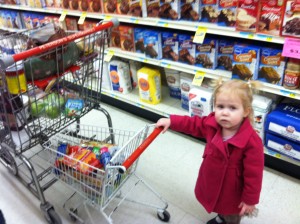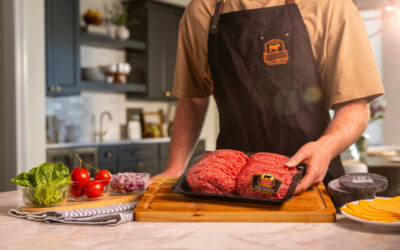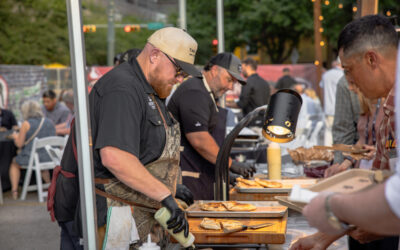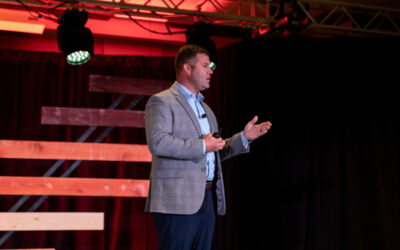
Beef’s a trip day 19: Beyond prices, grocery stores uncovered

I live between two small towns and each has a grocery store with mostly the same items. But if I want couscous I have to go one direction, and if adult beverages are on my shopping list I must go the other.
But most people have a lot more choice than that. So the retail business is a competitive one, each company trying to win over consumers with their low prices or high-quality or service or selection.
If your beef animal isn’t headed to your dinner table after it’s processed, it either goes through the foodservice distribution channel or is bound for retail. But there are a lot of logistics and business decisions that happen first.
You’ve all been in a grocery store, you know about the thousands of products they carry and their basic function. I’m not any more of a retail expert than you, but I’ve been lucky enough to work with people who are. We lost our friend and colleague Al Kober two years ago, but not before the veteran CAB director of retail shared with us his knowledge from a 50-year career in the retail meat business before he joined our company.
Here are some random bits that have helped me gain perspective:
- “Retailers price their meat at the highest level that consumers still perceive as delivering value. There are controls, like competition. In a metropolitan area a five-mile circle around a retail store could have 20 or 30 other retailers basically selling the same product.”
- “A retail store is very successful if it can make more than one penny per dollar (1%) average profit.” (Kind of makes one feel a little sheepish complaining about prices, huh?)
- “When you buy a 20-count box of oranges, you get 20 oranges. When you get a side of beef you’ve got to break it down.” (They have to sell the whole carcass to make money.)
- “You can have more than $100,000 of equipment in a store for wrapping, grinding and cutting. That has to be paid for.” (It seems producers aren’t the only ones who have to worry about capital purchases and maintenance.)
Al helped me walk through the math of things like product shrink and shelf life for an article on retail beef pricing and reminded me of the lag time between wholesale beef prices and the ability to pass that on to the consumer. (Most of them have a big chunk of their meat purchases slated out of the entire year, and what’s going on the front of that sales flier gets decided 4-6 weeks in advance.)
But one of my favorite bits from Al is this line: “We all need to get out of the mindset that the other people in the chain are somehow taking advantage and making all the profits. We have to realize that we all have a vested interest in keeping each segment profitable.”
Couldn’t agree more!
May your bottom line be filled with black ink,
Miranda
Beef’s a Trip Archives:
Day 1: Starting at day one
Day 2: Who are these people?
Day 3: Stockholders
Day 4: The cowherd’s purpose
Day 5: Deciding to care
Day 6: Quality focus doesn’t have to skip the middleman
Day 7: Stocking for quality
Day 8: SOLD!
Day 9: What have you done today?
Day 10: Working together to make ‘em better
Day 11: Keep on truckin’
Day 12: Packers want quality
Day 13: The target
Day 14: Packers up close & personal
Day 15: It’s not all about the beef
Day 16: Further processors
Day 17: From here to there–and a lot more
Day 18: He’s on your team
Day 19: Beyond prices, grocery stores uncovered
Day 20: Getting quality in the carts
PS—Holly Spangler’s “30 days on a Prairie Farm” series goes on, but we’re not alone. Check out the full list of other folks blogging along with us for 30 days in November on her blog.
You may also like
Success, Despite Challenges
Today’s market is complex and competitive. The collective effort of stakeholders across the supply chain positions Certified Angus Beef to meet the record demand for premium beef moving forward. Signals across the beef industry are clear and Angus farmers and ranchers seeking high-quality genetics that deliver premium beef are producing a product in high demand.
Keep the Supply Coming
A record-high 800 registrants from 17 countries gathered in Austin, Texas, to learn more about CAB, become inspired by the culinary work of chefs and pitmasters, and celebrate sales and production success. But at the forefront: supply and demand, a reflection of the chaotic past year, and preparing for what’s ahead.
Consumer Demand, Power of Quality
Demand for high-quality beef persists. But with that demand comes challenges. From tight cattle supplies to higher costs and increasing pressure on retailers to deliver a consistent eating experience, the pressure is on. David O’Diam, CAB VP of retail, addressed the current retail beef environment, highlighting both opportunities and challenges in today’s marketplace.



